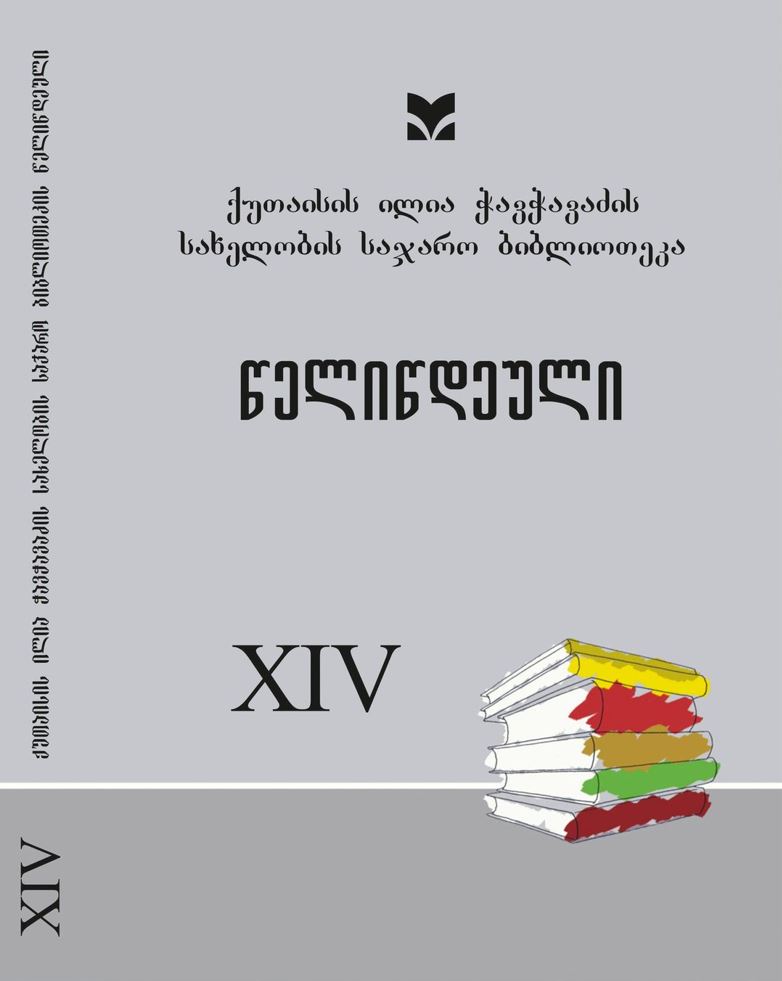On some issues about Abkhazia
DOI:
https://doi.org/10.61491/yk.14.2022.6995Keywords:
Georgian churches-monasteries in Abkhazia, Bichvinti churchAbstract
1. The Significance of the Bichvinta Church in the Early Spread of Christianity in Georgia.
According to historical sources, the Church of Bichvinta played a crucial role in the initial phases of Christianity’s dissemination in Georgia. The involvement of its leader in the activities of the early ecumenical council is a clear indication of the rapid establishment of Christianity in the early centuries (Sherozia, 2014). It is important to note that the head of the Bichvinta church should not have been of Greek or any other foreign nationality (=language) for two primary reasons. Firstly, preaching and prayers were likely conducted in the local language to ensure understanding among the congregation, as the purpose of the worship service would otherwise be lost. Secondly, the Bichvinta Church, possibly referring to the Bedia Cathedral, appears to have been active even before Christianity was declared the state religion of Georgia. However, Christians were still facing persecution in the Greco-Roman world during this time.
2. Noteworthy church documents of the 17 -18th centuries associated with the Bichvinta Church documents from the 17th and 18th centuries provide interesting insights into the Bichvinta church and its benefactors from various parts of Megrelia. For instance, records from 1628 mention a resident of Ghalidzga (present-day Beslakhuba) who donated Paraksia to the Bichvinta church. Similarly, an 18th-century document indicates that Ganisha Barkalaya of Ghalidzga, Bigwa Jwebe of Bia in the first half of the 18th century, Levan Dadiani donated Gvichia, a fisherman, to Bichvinta Church in 1628, and Gatanjia Gwichia of Bashi to Mtatsminda in 1642. This list can be further expanded using P. Tskhadaya’s work “Surnames and Surnames Settled in Samegrelo“ (2000). The princes of Megrelia paid close attention to the affairs of the Bichvinta church, as it was a part of their domain from the beginning. Notably, Levan II Dadiani, along with his sister, the queen of Kartli, showed great interest and support for Georgian culture(see the history of „Vepkhistkaosani’s“ oldest manuscripts), particularly for churches and monasteries.
Noteworthy examples include the restoration of the Jerusalem Cross Monastery together with the Bichvinta Church and the construction of a new Church in the Uriat district of Jerusalem (Gabashvili, 1956), among many others.
3. Of particular interest are the Agapes at the Cross Monastery in Jerusalem (Metreveli, 1967). The inscriptions here mention individuals such as „Markozi of Bedia“, „Former Nikoloz Catholicos of Bedia“, „Melikzedeli of Bedia“, „Yovakim the Catholicos of Tsaishi-Bedia and Abkhazia“, „Catholicos of Abkhazia Daniel and his son Giorgi of Chkhondi“,„Bishop Grigoli of Dranda“, „Mikael Abkhazi“, and „Eudemon of Dranda, son Jaiani of Tsalenjikha“. The timeframe for the individuals listed in the Agape inscriptions spans from the 11th to the 18th centuries. Together with the church documents, the Agape inscriptions from the Cross Monastery provide valuable historical information about Abkhazia (=Egris, Samegrelo) and Georgia as a whole.




